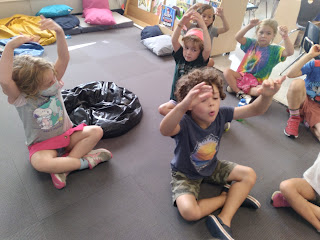During our first two weeks of school, much of our focus has been on developing a warm and caring classroom community in which all children feel safe and welcome, feelings that are essential for learning.
For young children, a critiacal first step in this process is helping them develop an awareness of their own feelings and emotions. Our school uses a curriculum called Ruler, which emphasizes identifying emotions and developing strategies for managing feelings in a given situation.
A key component of Ruler is the Mood Meter, which is a tool used to recognize and understand emotions. The Mood Meter is divided into four color quadrants based on pleasantness and energy level.
- Red feelings: high energy and more unpleasant (angry, scared, anxious)
- Blue feelings: low energy and more unpleasant (sad, disappointed, tired)
- Green feelings: low energy and more pleasant (calm, happy, relaxed)
- Yellow feelings: high energy and more pleasant (excited, playful, enthusiastic)
We have spent a lot of time naming our own feelings and identifying the appropriate color, as well as naming the feelings of characters from picture books and sorting them into corresponding colors. We all feel a range of emotions on any given day, which is expected and okay, but pleasant feelings are optimum, and we have talked about strategies for managing unpleasant emotions and hopefully moving toward a more pleasant feeling. One of the simplest and most effective strategies is taking deep breaths. We have practiced a variety of these including belly breathing, balloon breathing, birthday cake breathing, snake breathing, bunny breathing, roller coaster or 5 finger breathing, and volcano breathing. They are all similar in that they encourage deep, slow breathing which is often a first step in feeling calm and pleasant.
Identifying feelings and managing emotions are lifelong skills that take lots and lots of practice and we will continue our work in this area throughout the year in class, during wellness with our guidance counselor Liz Crowley, and across school settings.






No comments:
Post a Comment
Note: Only a member of this blog may post a comment.